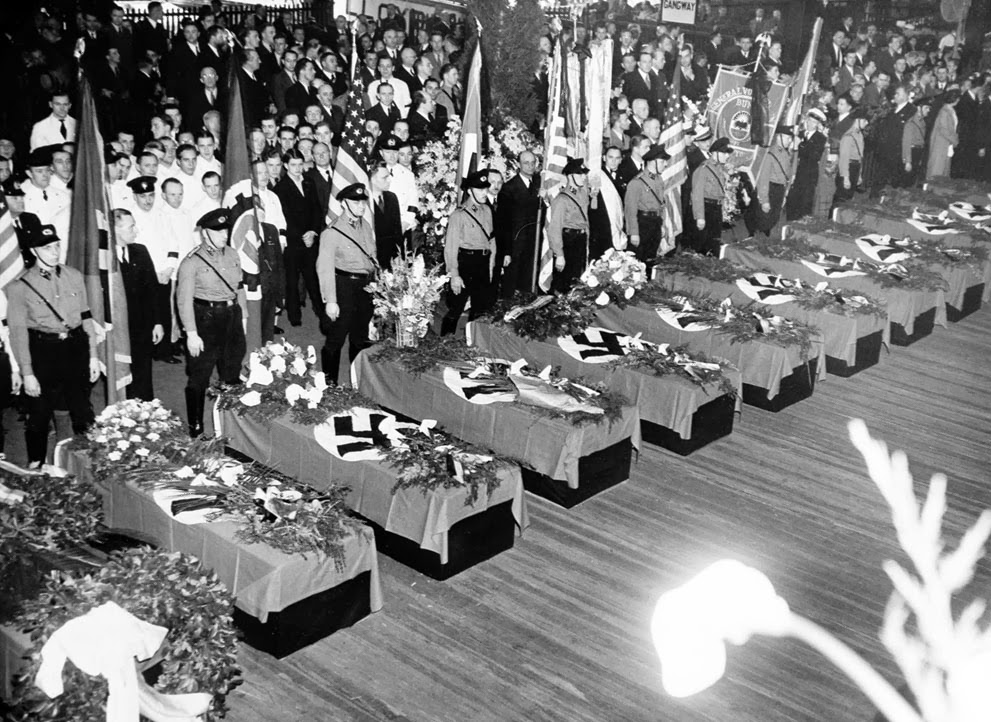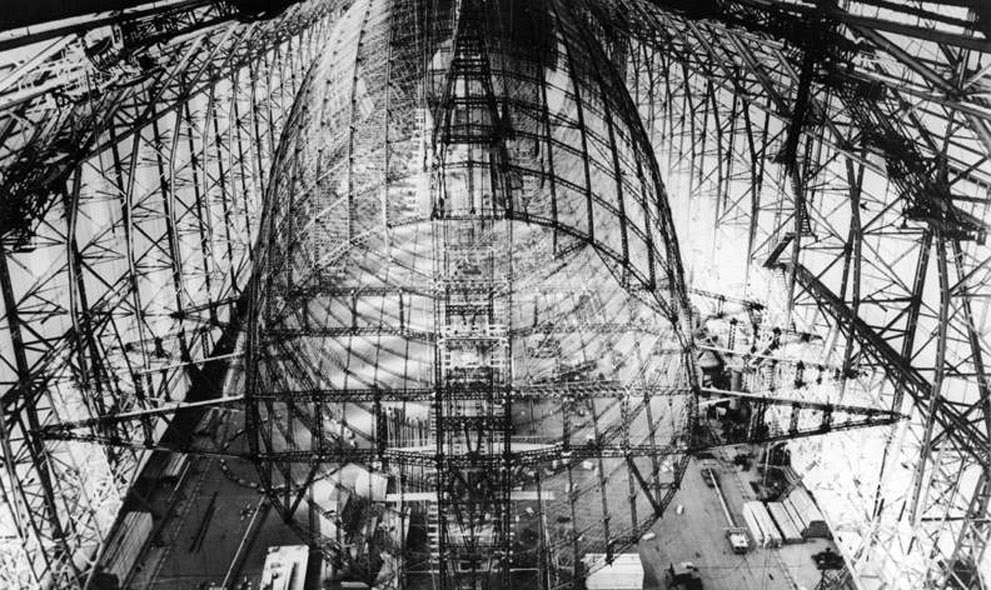Hindenburg, the massive German airship caught fire while attempting to land near Lakehurst, New Jersey, killing 35 people aboard, plus one ground crew member. Of the 97 passengers and crew members on board, 62 managed to survive. The horrifying incident was captured by reporters and photographers and replayed on radio broadcasts, in newsprint, and on newsreels. News of the disaster led to a public loss of confidence in airship travel, ending an era. The 245 m (803 ft) Hindenburg used flammable hydrogen for lift, which incinerated the airship in a massive fireball, but the actual cause of the initial fire remains unknown.
The Fire
A few minutes after the landing lines were dropped, R.H. Ward, in charge of the port bow landing party, noticed what he described as a wave-like fluttering of the outer cover on the port side, between frames 62 and 77, which contained gas cell number 5 . He testified at the Commerce Department inquiry that it appeared to him as if gas were pushing against the cover, having escaped from a gas cell. Ground crew member R.W. Antrim, who was at the top of the mooring mast, also testified that he saw that the covering behind the rear port engine fluttering. At 7:25 PM, the first visible external flames appeared. Reports vary, but most witnesses saw the first flames either at the top of the hull just forward of the vertical fin (near the ventilation shaft between cells 4 and 5) or between the rear port engine and the port fin (in the area of gas cells 4 and 5, where Ward and Antrim had seen the fluttering). For example, Lakehurst commander Rosendahl described a “mushroom-shaped flower” of flame bursting into bloom in front of the upper fin. Navy Lt. Benjamin May, the assistant mooring officer, who was atop the mooring mast, testified that an area just behind the rear port engine (where Ward and Antrim reported the fluttering) “seemed to collapse,” after which he saw streaks of flame followed by a muffled explosion, and then the entire tail was engulfed by flame. Navy ground crew member William Bishop described seeing flames “inside” the ship a little above and aft of the rear port engine car. Several witnesses inside the ship also saw the beginning of the fire. Helmsman Helmut Lau, who was stationed at the auxiliary control stand in the lower fin, heard “a muffled detonation and looked up and saw from the starboard side down inside the gas cell a bright reflection on the front bulkhead of cell No. 4.” Lau described the flames he saw at cell 4 at the inquiry: “The bright reflection in the cell was inside. I saw it through the cell. It was at first red and yellow and there was smoke in it. The cell did not burst on the lower side. The cell suddenly disappeared by the heat…. The fire proceeded further down and then it got the air. The flame became very bright and the fire rose up to the side, more to the starboard side, as I remember seeing it, and I saw that with the flame aluminum parts and fabric parts were thrown up. In that same moment, the forward cell and the back cell of cell 4 also caught fire [cell 3 and cell 5]. At that time parts of girders, molten aluminum, and fabric parts started to tumble down from the top. The whole thing only lasted a fraction of a second.” The fire quickly spread and soon engulfed the tail of the ship, but the ship remained level for a few more seconds before the tail began to sink and the nose pointed upward to the sky, with a blowtorch of flame erupting from the bow where twelve crew members were stationed, including the six who were sent forward to keep the ship in trim. In the port and starboard promenades on the passenger decks, where many of the passengers and some of the crew had gathered to watch the landing, the rapidly increasing angle of the ship caused passengers and crew to tumble against the walls, the furniture, and each other; passenger Margaret Mather recalled being hurled 15-20 feet against the rear wall of the dining room and being pinned against a bench by several other people.
The afterward
Prior to the Hindenburg disaster, the public seemed remarkably forgiving of the accident-prone zeppelin, and the glamorous and speedy Hindenburg was still greeted with public enthusiasm despite a long list of previous airship accidents. But while airships like the British R-101, on which 48 people died, or the USS Akron, on which 73 were killed, crashed at sea or in the darkness of night, far from witnesses or cameras, the crash of the Hindenburg was captured on film, and millions of people around the world saw the dramatic explosion which consumed the ship and its passengers. And despite its romance and grandeur, technologically the Hindenburg was obsolete before it ever flew. On November 22, 1935 — three months before Hindenburg first took to the air — Pan American Airways’ M-130 China Clipper made the first scheduled flight across the Pacific. The longest leg, the 2,400 miles from San Francisco to Honolulu, was longer than the distance required to cross the North Atlantic. In fact, Pan Am’s M-130 was designed not for the Pacific, but for the Atlantic; only political (not technological) considerations prevented Pan Am from inaugurating transatlantic airline service in 1935; the British refused to grant Pan Am landing rights until Britain had a plane that could make the same flight, but Britain was far behind America in the development of a long-distance airliner. (Photo credit: Library of Congress). Notify me of new posts by email.
Δ Subscribe






